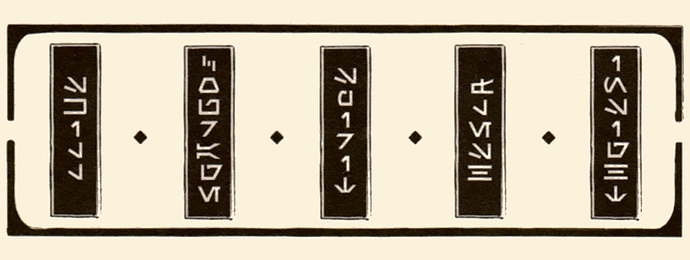Source: https://starwars.fandom.com/wiki/Jedi_Trials/Legends
OVERVIEW
The Jedi Trials, also known as the Trials of Knighthood, Jedi rituals, or Jedi ceremonies, were the challenges Jedi Padawans were given as pre-requisites for achieving Knighthood, and were sometimes retaken by Knights to earn the rank of Jedi Master. The trials were administered by the Jedi High Council to any Padawan they deemed worthy of becoming a Jedi. The primary trials were a set of five, and were the Trial of Skill, the Trial of Courage, the Trial of the Flesh, the Trial of Spirit, and the Trial of Insight. In addition, the Council could assign substitute tests or use an exceptionally trying mission in place of the traditional tests. Like the Initiate Trials, these tests were required to be taken in order to proceed to the next rank in the Jedi Order.
TRIAL OF SKILL
The Trial of Skill was one of the oldest trials in the battery of tests preferred by the Order. While the test did consist of numerous displays of lightsaber technique, the main thing that the battlemaster looked for when judging a potential Knight was their ability to avoid distraction through self-discipline. Before its formalization, the trial was made up of acrobatic feats, while using the Force to levitate objects in the midst of storms. As the test was incorporated into the more standard academy testing, the High Council required that each participant face a three-part assessment addressing physical, mental, and combat challenges. The standard physical challenges included a test of climbing, heights, endurance, escape and leaping. The mental challenges which followed tested skill with levitation, a second endurance test, duress, and reflection. The last part of the trial required a student to face off against some form of adversary, though the individual or individuals they faced varied in species or allegiance, and could be made of flesh and blood or a clever simulacrum created from archived data. The tests of conflict, dueling, and of the calm mind pitted Padawans against droids, other students, the Temple Battlemaster, or even the Grand Master, and outlast their attacks. Other students might face many opponents, some of them attacking with a lightsaber, others manipulating perception or altering the environment in the chamber. Additionally, the Council could opt to use the simulacrum program and send any number of Sith Lords to test the stamina of a young Padawan.
TRIAL OF COURAGE
Because courage was a vital quality in a Jedi, the Trial of Courage was seen as appropriate to give even to those who didn’t specialize in combat. Because it was important to remain in the dark about what one would face during the test, most Jedi did not divulge details on individual tests. Before the test was mainstreamed, battlefield heroics or facing down a Sith Lord qualified as passing. But due to the nature of the Republic’s Golden Age, the Council required a different sort of challenge in order to stay relevant. The Council could simulate a dangerous mission in the Trials Chamber, or send a student on an actual mission out of the Temple. These tests had the potential to be deadly and extremely challenging, illustrating why the Council did not just let anyone take the Trials.
TRIAL OF THE FLESH
The Trial of the Flesh was the most trying test given at the Temple. Involving the apprentice overcoming great physical pain, hardship, or loss, the test sometimes resulted in death or dismemberment. Throughout history, the Trial was known to involve bloodshed of some form. It wasn’t that uncommon for Padawans who defeated a Lord of the Sith on the battlefield to pass the Trials of the Flesh, Skill and Courage at the same time.
TRIAL OF THE SPIRIT
To pass the Trial of the Spirit, apprentices had to look deep within their souls, on a quest of self-discovery. This test was designed to pit a potential Knight against their most dangerous enemy: the darkness within themselves. Often, apprentices did not like what they saw, and it could be a highly traumatic experience. Because of this grueling self-examination, this Trial was often known as Facing the Mirror. While bearing similarities to the Trial of Skill, this test did not involve moving at all in most cases; instead a Padawan delved deep into a meditative trance to combat their inner fears and demons. Because of the ultra-personal details of the test, it is one that not even the High Council dare dictate. A Padawan must write the script for what will transpire on the journey. Because of the dangers of such deep meditation, a Master was always present to help guide a student back after they pushed them past where they least desired to go in their thoughts. The worst that could happen following a failed trial is awakening from meditation screaming and mentally broken.
TRIAL OF INSIGHT
The Trial of Insight was the last test offered as part of the Trials of Knighthood. Installed in the Trials program after noting that, while a Jedi could take down a Sith, they could be undone by common thieves, this test helped a Jedi to see what was really in front of their eyes through use of the Force. Seeing through illusion, evaluating an individual’s true persona, and unveiling lies are essential to a successful mission. To complete the test, Padawans were forbidden from reviewing any of the possible puzzles in the Jedi Archives; such an advantage would make the test moot. The Trial might require a Padawan to analyze and decipher the High Riddles of Dwartii, or decode broken text in scattered files. Sometimes, a field of stones would be laid out on the Trials Chamber floor and a Padawan would be forced to locate the single grain of sand amongst it.

